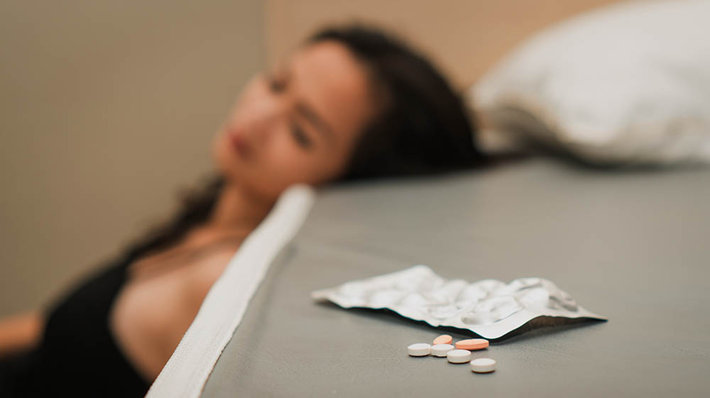Signs and Symptoms of Prescription Drug Use

Prescription drug abuse is becoming endemic across the United States and several European countries, as the proportion of people seeking treatment for prescription drug addiction continue to grow. In the US, opioids, tranquilizers, sedatives and stimulants are the leading drugs that are abused. The number of people seeking treatment help for opioid addiction grew more than 400% in the decade ending in 2008. But still, only one in a hundred people abusing prescription opioids get treatment.
Canada also reports problems with the same types of drugs, although at a much lower rate. Mexico has slightly more abuse of opioid drugs than heroin, and amphetamine-type stimulants are popular in South America. In Europe, it’s mostly the Northern European Countries that are having problems, like Norway, Sweden, and Finland that are fighting problems with benzodiazepines.
Self-Medication With Diverted Prescription Drugs
In the US, national surveys show that people are misusing drugs intended to treat severe pain, difficulty maintaining focus, sleeplessness, and anxiety. As a group, these drugs are second only to marijuana in their rate of abuse.
Many people may start by using one of these drugs legitimately then progress to abuse after addiction occurs. Many more people try out someone else’s prescription in school, at work or at a party and like the effect. Whatever way it occurs, the rate of abuse and overdose both are on the rise.
Signs and Symptoms of Abuse
Naturally, the signs of abuse of these drugs will vary by the type of prescription drug being abused. A person abusing prescription opiates (pain relievers), in addition to not feeling pain at normal levels, may be drowsy and confused. They may complain of nausea or look for remedies for constipation. Pupils will be constricted.
If they nod off, their breathing may be unnaturally slow. If they try to stop using this drug, they are likely to manifest muscle and bone pain, insomnia, diarrhea, vomiting and chills for several days.
A person abusing benzodiazepines is using a drug intended to treat anxiety and sleeplessness. Valium (diazepam), Xanax (alprazolam), Halcyon (triazolam) and Ativan (lorazepam) fall into this category. These drugs are addictive and can be very dangerous to withdraw from without medical assistance.
Other drugs used for these purposes are similar in function but different in chemistry like Ambien and Lunesta. A person abusing any of these drugs may appear unnaturally relaxed and drowsy.
Further, a person abusing sedatives or tranquilizers may show these signs:
- Memory may be poor
- Speech may be slurred
- Coordination may be off
- Pupils will be dilated
- The person may be depressed, tired, aggressive, agitated, paranoid or suicidal
- There may be headaches and dizziness
A person abusing stimulants such as Ritalin, Adderall and Desoxyn may manifest anxiety, delusions, flushed skin and chest pain with heart palpitations. Their sleep may be irregular, with long hours spent awake before they catch up.
When Young People Abuse Prescription Drugs
There may be distinct changes in a young person who has started abusing prescription. Parents may chalk up these changes to just being a teenager. But if too many of these signs show up, it is time for a closer look.
- Young person withdraws from family and friends and wants to spend a lot of time alone
- They have given up on their interests and hobbies
- They are hostile, angry and aggressive toward anyone who tries to control their actions
- They cry for little or no reason and are routinely irritable
- They no longer take care of their appearance and cleanliness
- Quality of schoolwork and grades take a dive
- Their sleep patterns are all off, sleeping during the day and staying up all night or for days at a time
- They no longer care about family rules or curfew
Rescuing a Person from Prescription Drug Addiction
The Narconon drug and alcohol rehabilitation program has been helping people find sobriety even after years or decades of being addicted, for nearly five decades. There are some 45 Narconon centers around the world, dedicated to helping people recover from addiction.
Of particular interest to the recovering addict or the family is the Narconon New Life Detoxification. This single phase of the overall addiction recovery program guides each person through this action that consists of time in a low-heat sauna, a strictly controlled nutritional program, and moderate daily exercise. This combination activates the body’s ability to flush out old stored toxins that remain in the fatty tissues after drug use. When these residues are gone, those completing this step say they feel brighter, have more energy and that their cravings are either greatly reduced or gone.
Resources:
 ®
®